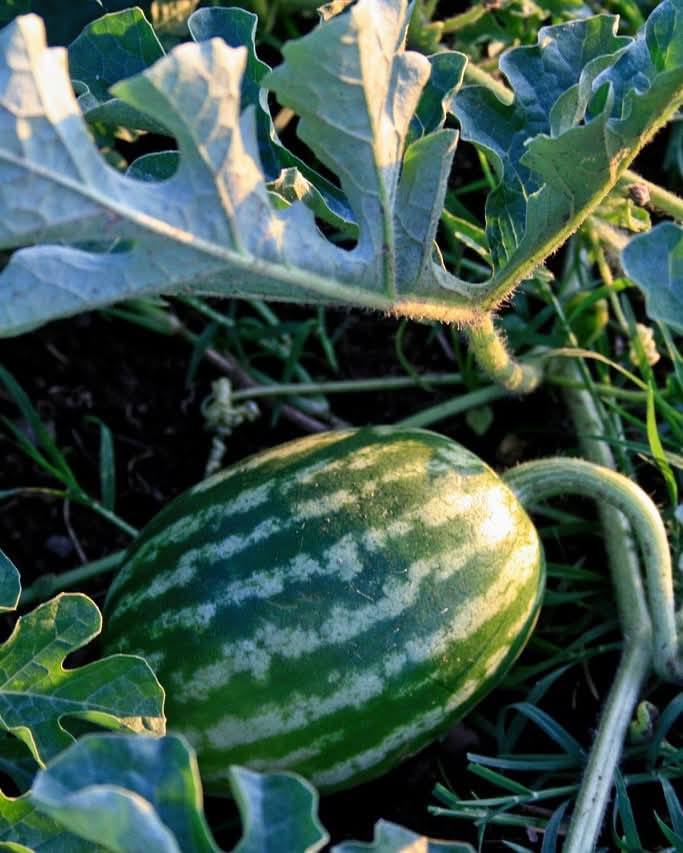Watermelon, with its vibrant green rind and juicy red flesh, is more than just a summertime treat—it’s a global symbol of refreshment, nutrition, and versatility. As one of the most popular fruits worldwide, watermelon holds a special place in both culinary traditions and modern health discussions. Let’s explore this remarkable fruit in detail, touching on its history, nutritional value, health benefits, and its wide-ranging uses.
A Fruit with a Rich History
Watermelon has a storied past that stretches back thousands of years. Its origins can be traced to the arid regions of Africa, where wild watermelons grew as a natural source of hydration. Ancient Egyptians cultivated watermelons around 5,000 years ago, and they even placed the fruit in tombs as a symbol of sustenance in the afterlife. From Egypt, watermelon spread to other parts of the world, including Asia and Europe, before eventually making its way to the Americas.
Today, watermelon is grown in more than 100 countries, with China, Turkey, India, and the United States among the leading producers. The fruit has evolved through selective breeding, resulting in a wide variety of shapes, sizes, and flavors to suit every palate.
Nutritional Powerhouse
Watermelon is not just delicious—it’s also a powerhouse of nutrition. Composed of approximately 92% water, it’s one of the most hydrating fruits available. This makes it an excellent choice for staying cool and hydrated during hot weather.
In terms of vitamins and minerals, watermelon is rich in:
- Vitamin A: Supports eye health and boosts the immune system.
- Vitamin C: Aids in collagen production and strengthens the immune system.
- Potassium: Helps regulate blood pressure and maintain proper muscle function.
- Magnesium: Plays a role in energy production and bone health.
Watermelon is also packed with antioxidants like lycopene, which gives the fruit its red color. Lycopene is known for its potential to reduce the risk of certain types of cancer, support heart health, and combat oxidative stress. Additionally, watermelon contains small amounts of B vitamins, which contribute to energy metabolism.
Health Benefits
The health benefits of watermelon go beyond its nutrient content. Here are some reasons why this fruit is considered a superfood:
- Hydration: Staying hydrated is essential for overall health, and watermelon provides both water and electrolytes to keep the body balanced.
- Heart Health: Lycopene, along with other antioxidants in watermelon, helps reduce cholesterol levels and lower the risk of heart disease.
- Skin and Hair Health: The vitamins A and C in watermelon promote healthy skin by supporting collagen production and preventing dryness.
- Muscle Recovery: Watermelon contains citrulline, an amino acid that may reduce muscle soreness and improve athletic performance.
- Weight Management: With its low calorie content and high water volume, watermelon is a satisfying snack for those aiming to manage their weight.
- Anti-Inflammatory Properties: The antioxidants in watermelon help reduce inflammation, which is linked to a variety of chronic diseases.
Versatility in the Kitchen
Watermelon’s culinary uses are as varied as its health benefits. While it’s often enjoyed fresh and raw, there are countless creative ways to incorporate watermelon into meals and snacks.
- Fresh Fruit Salads: Combine watermelon with mint, feta cheese, and a drizzle of olive oil for a refreshing summer salad.
- Smoothies and Juices: Blend watermelon with other fruits for a hydrating and nutrient-rich drink.
- Grilled Watermelon: Lightly grill watermelon slices to enhance their natural sweetness and add a smoky flavor.
- Desserts: Use watermelon in sorbets, popsicles, or even as a topping for yogurt and granola.
- Savory Dishes: Incorporate watermelon into salsas, gazpachos, or as a unique ingredient in stir-fries.
Beyond its use as food, watermelon juice is also popular as a natural beverage in sports and wellness communities due to its hydrating properties and electrolyte content.
Sustainability and Innovation
As global demand for watermelon continues to grow, innovations in agricultural practices are making its cultivation more sustainable. Farmers are adopting techniques such as drip irrigation, which conserves water while ensuring the fruit thrives. Researchers are also exploring ways to use watermelon rind and seeds—often discarded—as valuable byproducts.
Watermelon rind, for example, can be pickled, candied, or blended into smoothies for added fiber. The seeds, when roasted, make a nutritious and protein-rich snack. These initiatives not only reduce food waste but also maximize the potential of this incredible fruit.
A Cultural Icon
Watermelon has transcended its role as a mere fruit to become a cultural icon in many parts of the world. It is featured in festivals, art, and traditions, symbolizing joy, abundance, and community. In Japan, farmers have even mastered the art of growing square watermelons as a novelty item, showcasing the fruit’s adaptability and appeal.
In the United States, the watermelon-eating contest is a staple of summer fairs, while in China, watermelon is a popular gift during the Lunar New Year as a symbol of good fortune. These traditions highlight the universal love for watermelon and its significance beyond the dinner table.
Conclusion
Watermelon is much more than a refreshing snack—it’s a testament to nature’s ability to provide both nourishment and pleasure. With its rich history, impressive nutritional profile, and cultural significance, this fruit truly stands out as a global favorite. Whether you’re enjoying a slice on a sunny day or exploring creative recipes, watermelon is a reminder of the simple joys and incredible benefits that nature has to offer.
